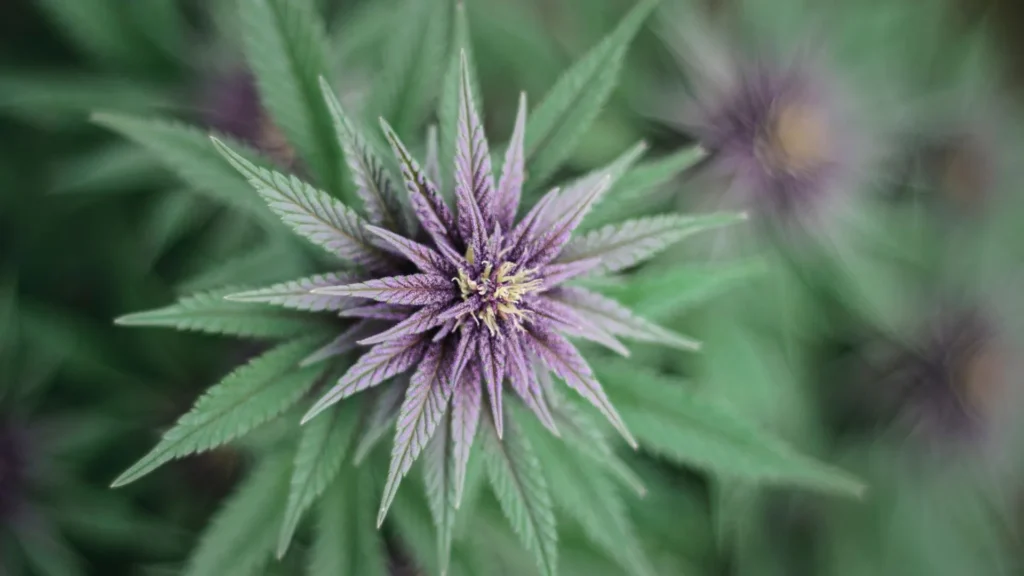Granddaddy Purple: Your Ultimate Guide to Growing and Enjoying This Classic Strain
Table of Contents
Granddaddy Purple is a famous cannabis strain that comes out as an interesting and strong indica. Its genetics, effects, and growing traits all work together to make a rich blend. This strain was created in California when Purple Urkle and Big Bud were bred together.
In addition to looking beautiful, this strain has a THC level of up to 23%, which makes it very strong but also very relaxing. It can help with stress and make you feel euphoric. Let’s get into the specifics and the art of growing this famous strain.

Genetics and Lineage of Granddaddy Purple
Granddaddy Purple is a well-known indica strain that comes from a carefully made cross between Purple Urkle and Big Bud, two strong indica strains. This strain originated in California and is the result of careful crossbreeding by Ken Estes in his laboratory in San Francisco.
Purple Urkle, which has deep purple colors and a sweet berry smell, gives it’s its unique qualities. A very calm high can be caused by this strain, and it is praised for its ability to relieve stress. Big Bud, on the other hand, is known for its big, thick buds and high yields, which adds strength and output to the mix.
By crossing these two strains, a new cannabis variety was created that is loved for both its beautiful look — buds with purple undertones and red hairs — and its extreme strength — THC levels can reach up to 23%. This gives people a strong and tasty indica experience.

Effects and Fragrance of Granddaddy Purple
As a classic indica strain, Granddaddy Purple results in a strong body high that makes people feel very calm and relaxed. It is a great choice for anyone who wants to ease their worry, anxiety, pain, or insomnia. Beyond its therapeutic benefits, Granddaddy Purple introduces a sense of euphoria and contentment, often accompanied by a heightened appreciation for laughter.
The strain has a strong smell thanks to its terpene profile, which includes linalool, myrcene, β-pinene, caryophyllene, geraniol, and α-bisabolol. There are pleasant hints of earthy pine and citrus in the scent, along with grapes, berries, and sweetness.
Together, this fragrant symphony and the strain’s visually stunning purple-tinged buds make the experience better, making Granddaddy Purple a great choice for cannabis fans who want a tasty and relaxing session.

How and When to Use Grandaddy Purple
Granddaddy Purple is a clinically useful and flexible cannabis strain that can help with many areas of health. It is mostly known for its ability to relieve stress. It is a popular choice for people who want to deeply relax and get relief from anxiety and sadness.
Because it makes you feel very sleepy, it’s a great way to help people who are having trouble sleeping get a good night’s rest. Grandaddy Purple is fantastic at managing pain, providing relief to people with chronic pain, muscle aches, and the nausea that radiation and chemotherapy can cause in cancer patients.
Along with its medical uses, this strain can help people who are having trouble eating or are going through treatments that reduce their appetite by making them hungry to eat. Although Granddaddy Purple has a wide range of therapeutic uses, it is especially helpful for people who are trying to get better from both emotional and physical pain.

How to Grow Granddaddy Purple
Happily, Granddaddy Purple is an easy strain to grow, and newbies especially like it. This plant is very easy to grow and is also very resistant to common diseases, which makes it very simple to grow. The strain does well both inside and outside, but it does best in a room with good airflow and a humidity level around 50%.
When grown indoors, Granddaddy Purple can handle a variety of growing mediums, such as soil and hydroponics, and blooms in about 8 to 11 weeks. The plants can grow indoors because they are small, and if conditions are just right, growers can expect a huge harvest of up to 19 ounces per square meter.
When grown outside, Granddaddy Purple turns into a thick bush that produces a lot of fruit — about 17 ounces per plant.




